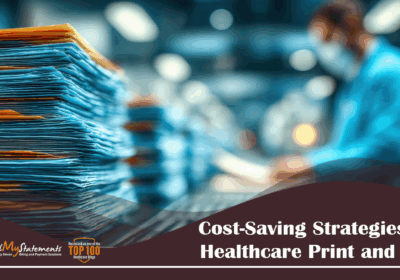5 Avoidable Patient Statement Mistakes (And Solutions)

The patient statement is a critical component of effective patient-practice communication within the healthcare revenue cycle. Often treated as an afterthought, they represent the culmination of the patient’s healthcare journey and are instrumental in conveying the services rendered and facilitating timely payment.
When a patient statement is unclear or the payment process is overly complex, typical consequences include patient confusion and delayed payments. This not only hinders revenue collection but also wastes valuable practice resources.
Review these common patient statement mistakes to ensure your practice communicates patient financial obligations effectively:
Mistake #1: Patient Statement Design
Problem
A patient statement without any design consideration is problematic for various reasons. Most importantly, basic statement designs leave the patient confused about what and why they owe. This confusion leads to an increased amount of time before making a payment. Additionally, healthcare practices that fail to prioritize a modern design usually miss additional opportunities to better the practice-patient relationship.
Solution
Redesigning the patient statement is an investment that yields big returns. Simple design eye-science tricks like the use of different colors, texts, font sizes, charts, and images help to clarify important information without confusing the patient.

Pro tip: Does designing a visually appealing statement sound time-consuming or difficult? Statement vendors like MailMyStatements have various professionally designed statement templates available.
Mistake #2: Not Using Integrated Patient Statement and Payment Systems
Problem
Failing to integrate existing statement and payment systems presents a huge missed opportunity for a seamless patient experience. A disconnect between the two typically results in higher operating costs and reduced collections.
Solution
Use the same vendor for both patient statements and payments. Doing so provides opportunities to directly lead the patient from their statement document (or online statement) to their payment portal, where they can submit payment from their existing account in seconds. Using one system also reduces training needs and implementation time.
Mistake #3 Not Offering eStatements or other Digital Communication Options

Problem
Are you part of the 32% of providers who still do not offer eStatement options? Did you know that 81% of patients would prefer to receive their patient statements electronically? Failing to take advantage of this technology-enabled communication form may detour patients from making payments.
Solution
Provide patients with the ability to opt-in to receiving their statements via email. Doing so can drive down statement delivery costs while catering to patient preferences. Electronic statements make it easier for patients to submit payment immediately through direct links or quick click payment options, significantly reducing the number of days a patient’s balance sits in accounts receivables.
Mistake #4: Wasting Money
Problem
Healthcare systems that handle their statement printing and mailing in-house often spend significantly more than those who outsource the tasks. Not only are the resources (stamps, envelopes, printers, etc.) more costly to individual practices, they must also pay staff to complete the job.
Solution
Outsourcing statement print and mail needs can cut costs by 30%. Vendors receive bulk discounts on materials, then can pass along those savings to customers, while handling patient statement functions in house can cost $1.00 per sent statement. Using an outside vendor also frees up the time of in-house staff members to focus on other needs within the practice.

Mistake #5: Not Collecting Data
Problem
Actively testing various statement designs, delivery mediums, or other factors is not enough to improve the patient statement and collection process. Without hard data, it’s challenging to conclude which methods do and do not help with improving patient satisfaction.
Solution
Collecting and analyzing data can effectively improve processes over time. By closely tracking the number of payments received within a time period then cross-referencing them with the number of support calls sustained, you can see what is working and what isn’t. This way, you can focus efforts on a design that diminishes time in patients’ accounts receivables and strengthens the revenue cycle. Patient satisfaction is also a big contributor to accelerated payments. Ask for your patients’ input and integrate it into your processes.
Final Thoughts
Many healthcare practices underestimate the significance of patient statement design and the overall print and mailing process. The patient statement serves as a crucial touchpoint in creating positive relationships. Inefficient communications often lead to patient confusion, diminished customer satisfaction, delayed payments, and increased administrative burden.
Get in touch with us today and learn more about how MailMyStatements’ BillingCycle Plus software can help streamline your patient billing and payment collection process with both traditional print & mail statements and digital tools like eStatements, SMS text message payment alerts and reminders, and machine learning chatbots.
![]()



